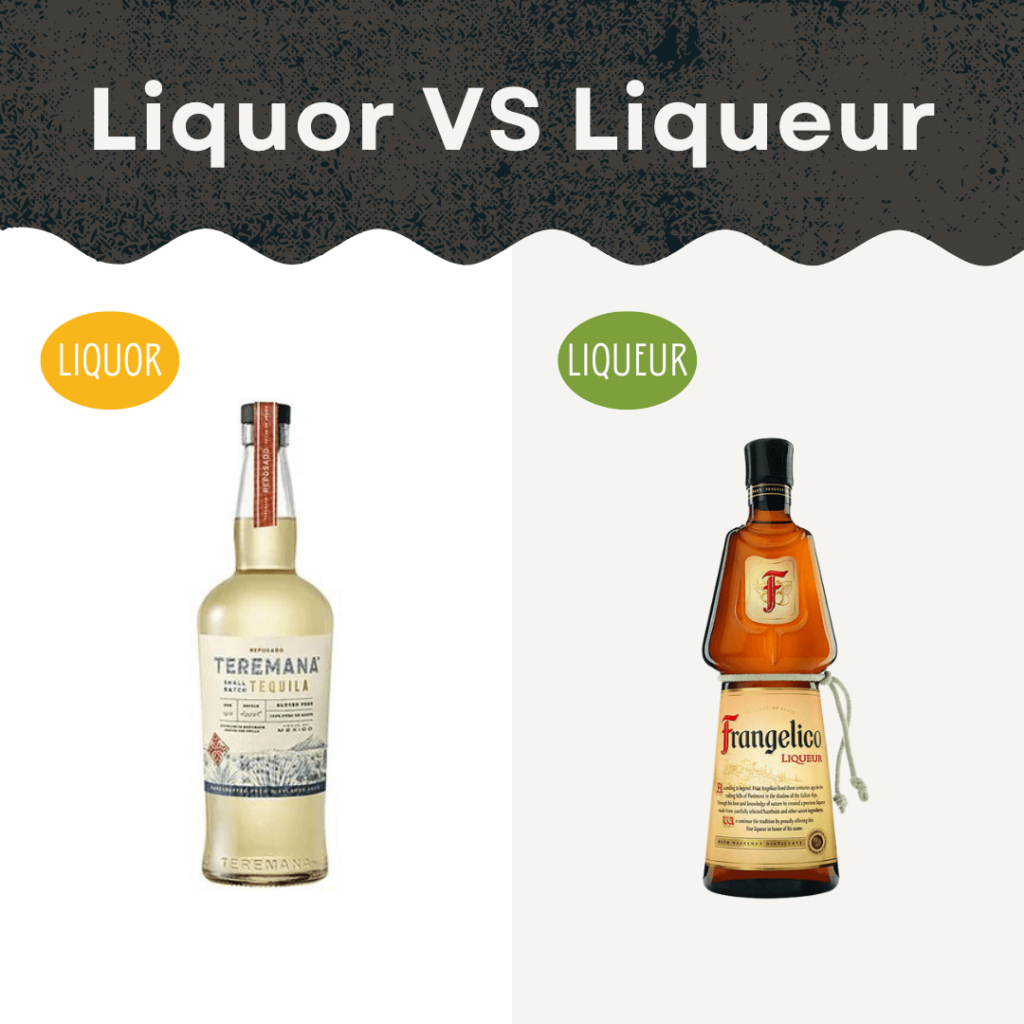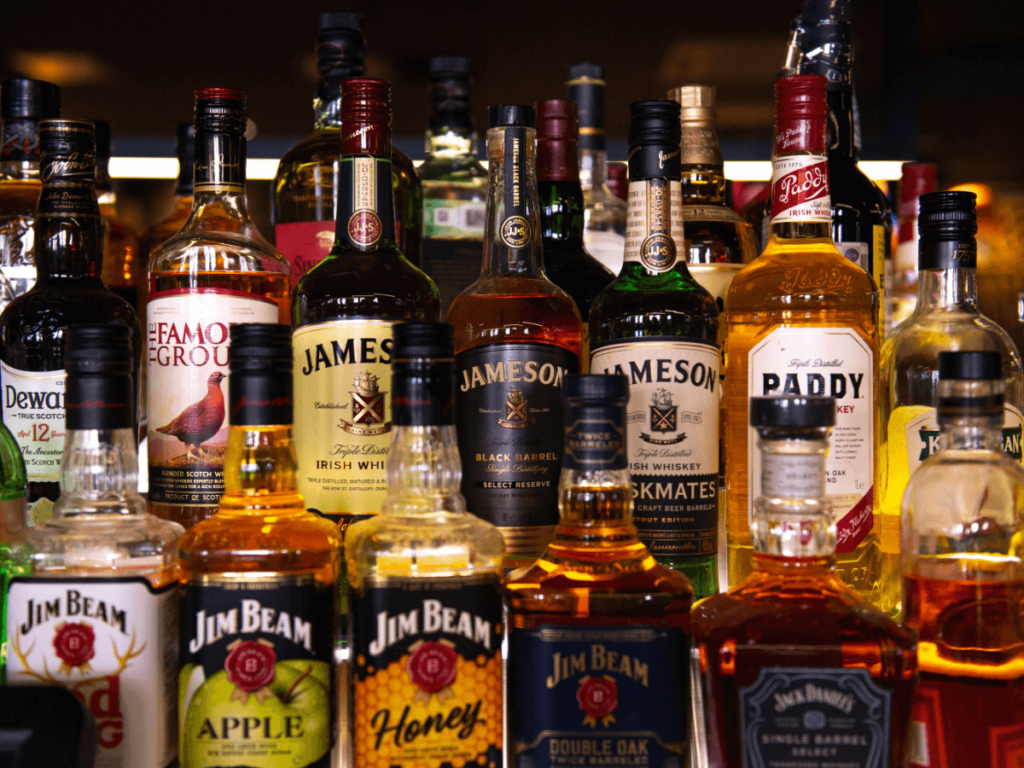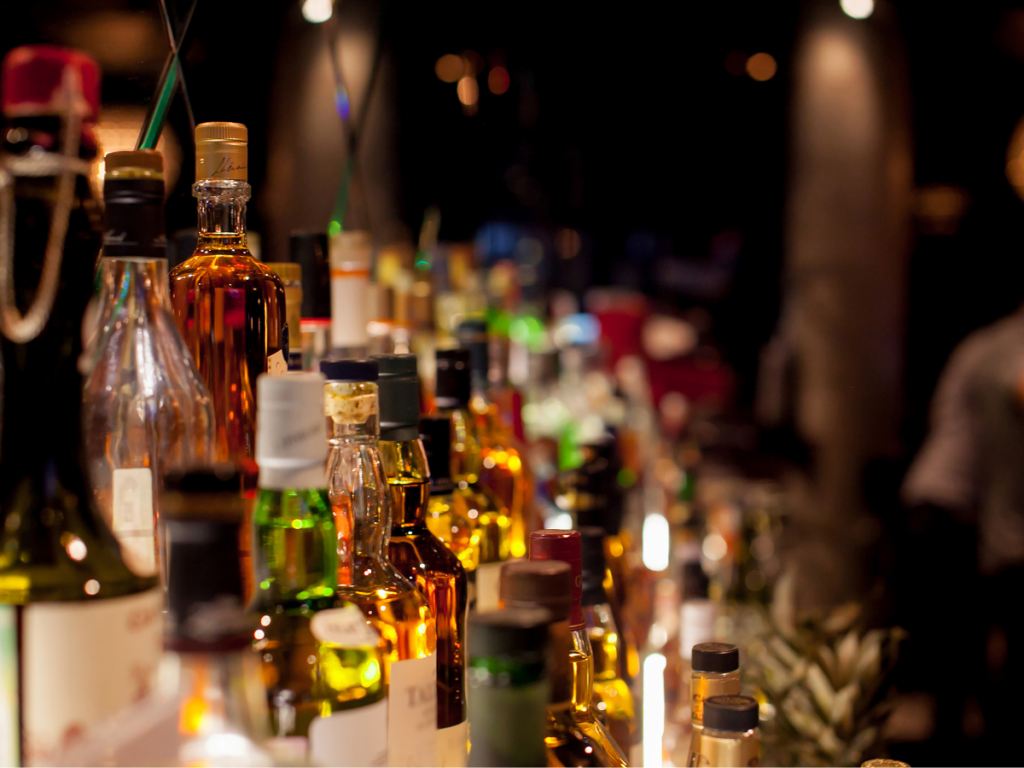Muhtemelen daha önce şişe açacağı olmadan bir şişeyi açmak için mücadele etmişsinizdir. Peki, mücadeleleriniz...
Likör VS Likör: Aradaki Fark Nedir
Today we’re talking about two types of alcoholic drinks that often get confused – liquor and liqueur.
You’ve definitely heard of both before. From vodka and whiskey to Bailey’s and Kahlua, these strong spirits are staples behind most bars and can totally transform a cocktail. Or just be sipped on their own!
Ancak kulağa çok benzer gelse ve her ikisi de yetişkinlere yönelik içkiler olsa da, likör ve likör aslında oldukça farklıdır.
I didn’t really understand the exact differences myself until recently!
So in this article, we’ll break down what sets liqueurs and liquors apart, look at some popular varieties of each, and go over how you can use them.
Likör VS likör: Aradaki fark nedir
First off – pronunciation. I’ve heard both liquor and liqueur incorrectly pronounced many times. Just to be clear:
Liquor is pronounced “lick-er.”
Liqueur is pronounced “luh-kur.”
Got that? Great! With that out of the way, let’s jump right into understanding these terms.
At a basic level, liqueurs and liquors are both alcoholic beverages that contain distilled spirits. But liqueur has added flavorings like fruits, cream, herbs, nuts, spices, or even coffee or chocolate. The extra ingredients make them sweeter and more syrupy, while liquors don’t contain added sugar or flavors.
Şu ana kadar mantıklı geldi mi? Temel ayrımı özetlemek gerekirse: Likör; votka, rom, viski vb. gibi doğrudan damıtılmış alkollü içkileri ifade eder. Likör, likörü baz olarak kullanır ancak ekstra aroma eklenmiştir.
Now you might be wondering – how did these flavorful liqueurs come about? And what exactly IS the process of distillation that liquors go through? Good questions! Let’s explore those next.
Tarihçe ve Üretim
İnsanlar aslında binlerce yıldır likör damıtıyor! İlk damıtılmış içkilerden bazıları muhtemelen 12. yüzyıl civarında İtalya ve Fransa'da üretilmiştir. O zamanlar, birçok likörün tıbbi özelliklere veya özel iyileştirici güçlere sahip olduğu düşünülüyordu. Zaman içinde tarifler ve teknikler Avrupa, Orta Doğu ve Asya'ya yayıldı.
Today, we of course know liquor more for its intoxicating effects than any health benefits. But fun fact – even in the 1500-1600s, liqueurs were still largely used as medicine rather than recreational drinks. Their viscous texture and concentrated herbal flavors made liqueurs sort of a sweetened cure-all tonic. It wasn’t until hundreds of years later that they became popular as after-dinner drinks or cocktail mixers.
İster basit likör ister aromalı likör yapılsın, ilk adım fermantasyondur. Bu, şekerleri ve nişastaları alkole dönüştüren mayaya maruz bırakmak anlamına gelir. Fermantasyon sadece içki için değil, şarap, bira, ekmek ve hatta yoğurt gibi şeyler için de gereklidir!
Next comes the truly defining process – distillation. This involves heating up fermented liquids to the point that alcohol evaporates, then collecting and cooling those alcohol vapor droplets. Repeating this redistillation makes the end product higher and higher proof.
What’s left is concentrated ethanol alcohol alongside various organic compounds that provide taste, aroma, and complexity. The more times it’s redistilled, the purer and cleaner the liquor becomes. Vodka is one of the most extremely distilled spirits, getting up to 95% ABV!
Viski ve brendi gibi diğer likörler, istenen tatları vurgulamak için çok özel damıtma koşullarına tabi tutulur. Sıcaklık, ekipman şekli, fermente malzemeler ve yıllandırma süresi gibi değişen faktörler rom, cin ve tekila gibi farklı klasik likör türlerine ayırt edici karakterlerini verir.
Now let’s go back to liqueurs. As we learned already, they start with a fermented and distilled base liquor. The extra step is infusing, mixing, and sweetening it with anything from fruits, nuts, spices, herbs, flowers or bark to chocolate, caramel, honey, dairy cream, eggs, and more.
Bugün, likör bazları ve tatlandırıcıların sonsuz kombinasyonları ile binlerce benzersiz likör bulunmaktadır. Bazı likör tarifleri nesiller boyunca yakından korunan sırlar olmuştur!
Popüler Çeşitleri
Alright, now that we understand how they’re made, let’s go through some popular types of liquor and liqueur along with what makes them special. We won’t have time to cover them all, but these are definitely the heavy hitters you’ll encounter at the bar or liquor store.
Likör Çeşitleri
İçki ile başlayan ana kategoriler şunlardır:
- Votka: Typically made from grains like wheat, rye, or potatoes. This neutral spirit becomes a “blank canvas” for both cocktails and infused flavor varieties like lemon, vanilla, or cinnamon vodka. Popular brands include Smirnoff, Absolut, Tito’s, and Ketel One.
- Rum: Melas veya taze meyve suyu gibi şeker kamışı yan ürünlerinden yapılır. Hem koyu hem de açık rom çeşitleri tiki içeceklerine ve yazlık kokteyllere tatlılık ve karakter katar. Captain Morgan, Bacardi, Malibu ve Myers en çok satılanlardan bazılarıdır.
- Tekila: Mexico’s most iconic spirit comes from the agave plant. From mixed drinks like the Tequila Sunrise to salt-rimmed shots, this liquor with herbaceous flavors makes the party more fun. Patron, 1800, Casamigos, and Jose Cuervo rule the blue agave game.
- Viski: Usually distilled from fermented grain mash including varieties like corn, barley, rye or wheat. Aged in wooden barrels for complexity. Bourbon, Scotch, Irish, and Tennessee styles like Jack Daniel’s, Jameson, and Crown Royal define whiskey’s popularity.
- Cin: Juniper-flavored liquor made from neutral fermented grains. The juniper berry’s bracing pine quality refreshes cocktails like the Martini and Gin and Tonic. Top brands are Tanqueray, Aviation, Bombay Sapphire, and Hendrick’s.
- Brandy: Elma veya üzüm gibi meyve sularının damıtılarak pürüzsüz bir eau de vie haline getirilmesi ve ardından meşede yıllandırılmasıyla oluşturulur. Ünlü türleri Fransa'dan Konyak ve Armagnac'tır. Hennessy, Courvoisier ve Martell prestij sahibidir.
Likör Çeşitleri
Those cover the major liquor bases you’ll encounter. Now what about delicious liqueurs? Some of the main liqueur varieties are:
- Meyve: Böğürtlen, portakal, şeftali, kavun veya dut gibi tatlı tatları sergileyin. Bu likörler kokteyllere şenlikli bir lezzet katar. Örnek olarak Cointreau, Grand Marnier, Chambord ve limoncello verilebilir.
- Kahve: Kahlua ve Tia Maria gibi karışımlar, Irish Coffee gibi yemek sonrası içecekleri ekstra şımartıcı hale getirir. Kahve ve alkollü içkileri karıştırmak rahatlatıcı ama sofistike bir kombinasyon oluşturur.
- Kremalı: Creamy liqueurs have an airy, velvety texture thanks to added dairy or eggs. Bailey’s Irish Cream and Amarula fruit cream give dessert cocktails a decadent edge.
- Çikolata: En iyi ikram için Godiva ve Tiramisu gibi çikolata likörleri içki arzusunu tatmin eder. Zengin, ısıtıcı derinlikleri onları martinilere doğal bir katkı haline getirir.
- Bitkisel: Bu her şeyi kapsayan lezzet kategorisi, otlar, çiçekler, tohumlar, baharatlar, ağaç kabukları, kökler, vanilya ve daha fazlasından yapılan likörleri kapsar. Bu karmaşık botanik infüzyonlar arasında Chartreuse, St Germain, Benedictine, Drambuie ve Jagermeister bulunmaktadır.
- Fındık: Toasted nut flavors give these liqueurs full body and subtle sweetness. Frangelico’s hazelnut and Disaronno’s almond profiles make them mixers that instantly elevate fall and winter drinks.
Of course we’ve still just barely scratched the surface of all the liqueurs out there today, not to mention the rising tide of creative craft liquor distilleries. But knowing this lineup will help you understand menus and recipes much better.
Likör ve Likörlerin Kullanımı
Now you know what makes liqueurs different from straight liquor. So how do bartenders actually use them in drinks? And what’s the best way to drink them when you’re not mixing cocktails?
Liquors are extremely versatile thanks to their neutral flavor. As “base spirits,” they build the foundation of all kinds of cocktails balancing stronger boozy impact with other sweet, sour, or herbal elements. They can also be simply sipped neat, over ice, or with a basic mixer like soda, juice or tonic water.
Vodka’s mild profile suits chilled shots, refreshing mixed drinks like vodka soda or Screwdriver, and picks up other flavors easily in infusions. Gin plays nicely with lighter mixers like tonic, citrus, elderflower, or cucumber to round out its juniper bite in G&Ts and gimlets.
Whiskey’s complexity shines when drunk straight or on the rocks but also adds depth to an Old Fashioned or Manhattan when combined with bitters, sugar, and other liquors. And tequila adds Southwestern flair to spice up margaritas, sangrias, and spicy-smoky combinations.
Çok amaçlı likörlerle karşılaştırıldığında, likörler çok tatlı ve güçlü doğaları nedeniyle daha spesifik kullanımlara sahiptir. Fark edilebilir bir etki yaratmak için sadece küçük miktarlarda kullanmanız yeterlidir. Yarım ons ya da daha fazlası diğer malzemeleri hızla bastıracaktır.
Klasik olarak likörler, aristokrat Avrupa'da abartılı ziyafet yemeklerinin sonunda sindirime yardımcı olmak için ortaya çıkmıştır. Günümüzde Irish Coffee ve Espresso Martinis gibi yemek sonrası kahve kokteylleri likörleri benzer bir şekilde öne çıkarmaktadır. Likörlerin zenginliği, acı kahveye karşı tatlı bir hoşgörü sağlar.
Kokteyllerde likörler, likör bazları ve ek tatlar arasındaki boşluğu doldurur. Tatlı bir portakal likörü olan triple sec'in Margarita'da tekila ile narenciye suyunu nasıl birleştirdiğine bir bakın. Ya da vişne Heering'in bir Manhattan'da brendi ve vermutu nasıl yumuşak bir şekilde birleştirdiğine.
Bittersweet herbal liqueurs add intrigue to simple two-ingredient combos too – think Campari and gin or Aperol and prosecco. Even just adding a splash of one to a dram of straight whiskey makes for a warming, gently enhanced take on a classic spirit.
Thanks to sweeter flavors that offset liquor’s punch, many liqueurs also make great introductory alcohols for those new to drinking too. Berries and cream Baileys over ice proves far more approachable than harsh whiskey or vodka to start with.
Ve birçok kişinin likörlerin tadını çıkarmasının son yolu, soğutulmuş bir shot veya çökmekte olan bir yudum olarak kendi başlarınadır. Cevizli, baharatlı Drambuie veya kahve öpücüğü Kahlua'yı sek olarak servis etmek, şekerle yumuşatılmış, konsantre yoğunluklarının parlamasını sağlar.
Sonuç
We’ve covered quite a bit of ground going through all things liquor and liqueur! To recap, the key points about each are:
İçki:
- Tipik olarak 40 ila 55% ABV alkol içeren herhangi bir damıtılmış içkiyi ifade eder
- Saflık için fermantasyon ve çoklu damıtma yoluyla üretilmiştir
- Votka, rom, tekila, cin, brendi, viski içerir
- Sek içmek veya kokteyllere karıştırmak için çok yönlü
- Temel ispirto aroması verir ancak tatlılık katmaz
Likör:
- Damıtılmış likör bazının yanı sıra ilave aromalarla başlar
- Genellikle 15-30% ABV civarında daha düşük alkol
- Meyve, kahve, krema, fındık, baharat, çikolata stillerini içerir
- Zengin tatlılık, viskozite ve çiçeksi/bitkisel karmaşıklık sağlar
- Çoğu zaman kokteylleri zenginleştirmek için küçük miktarlarda kullanılır
To share a memorable analogy I once heard: Think of liquor as the canvas and liqueur as the paints. You start with blank neutral spirits, then splash in intensely vibrant liqueurs for bursts of color…transforming your basic canvas into a vivid, flavored cocktail masterpiece!
Miksolojideki kullanımlarının ötesinde, likör ve likörlerin de son derece büyüleyici bir tarihi vardır. Yüzyıllar önce tıbbi bitkisel toniklerden bugün kokteyllerin temel yapı taşları haline nasıl geldiklerini inceledik. Bazı likör tarifleri yüzlerce yıl sonra bile hala sıkı sıkıya korunan sırlardır!
İster sek viskiyi tercih edin, ister buzlu Baileys ile tatlı içmek için bir bahaneyi sevin, ister evde yeni karışımlar hazırlayan bir miksolojist olun, umarım bu yazı size içki bilginizi süslemek için yararlı bir likör ve likör dökümü sunmuştur!
We just covered a whole lot of information, but don’t feel overwhelmed. Getting familiar with some go-to liquor brands you enjoy and experimenting with liqueur flavors can be super fun. No need to learn all their nuances in just one night!
When starting out, sweeter liqueurs tend to be more mixable for beginners too compared to harsher straight liquors. Feel free to start slowly sipping rather than shooting if that’s needed to acquire the taste!
No right or wrong way here – just discover what types of liquor and liqueur suit your preferences.
Bu kokteyl merakı konusunu benimle birlikte keşfetmeye geldiğiniz için teşekkürler! Bir dahaki sefere kadar, şerefe!






